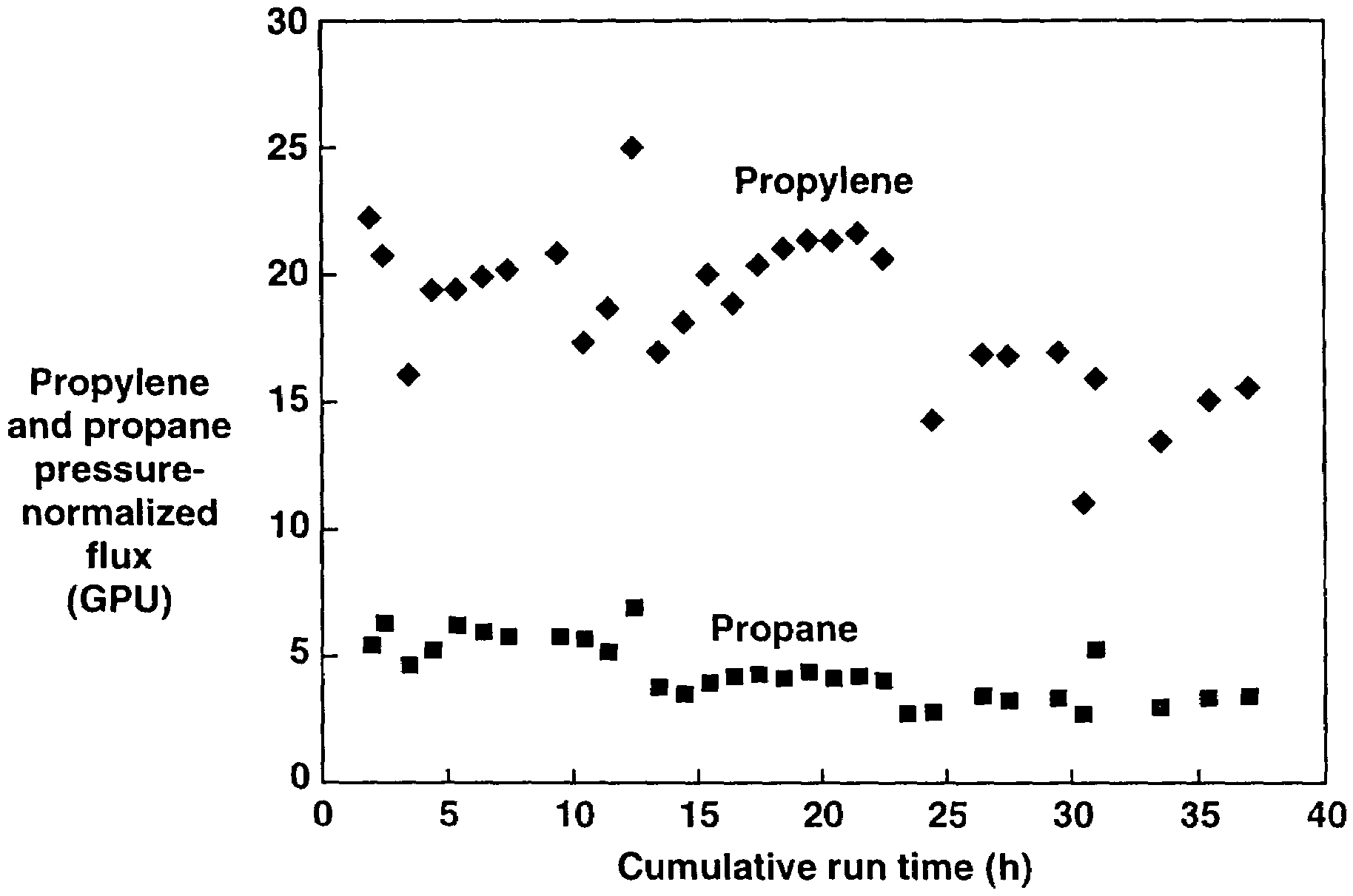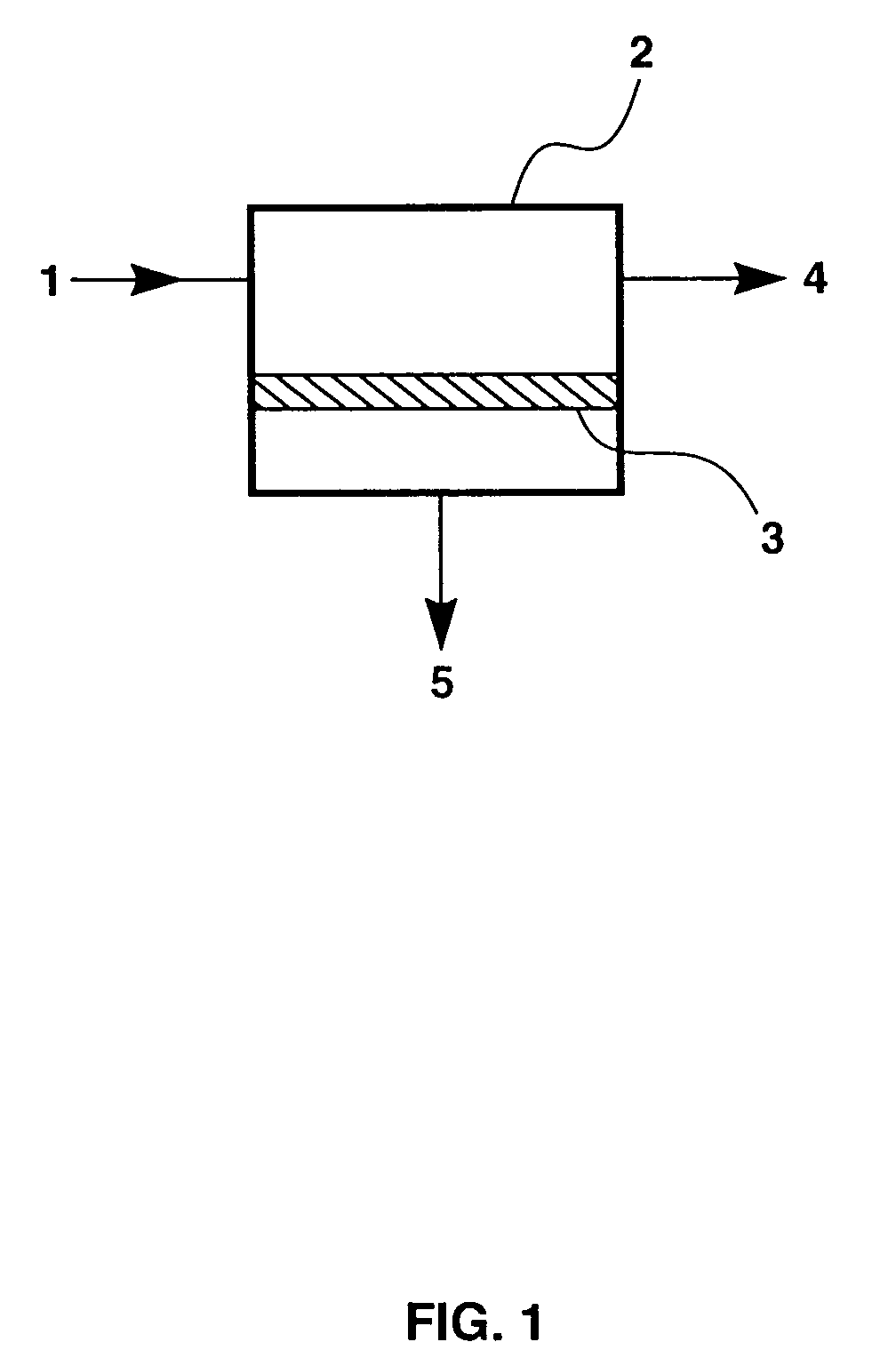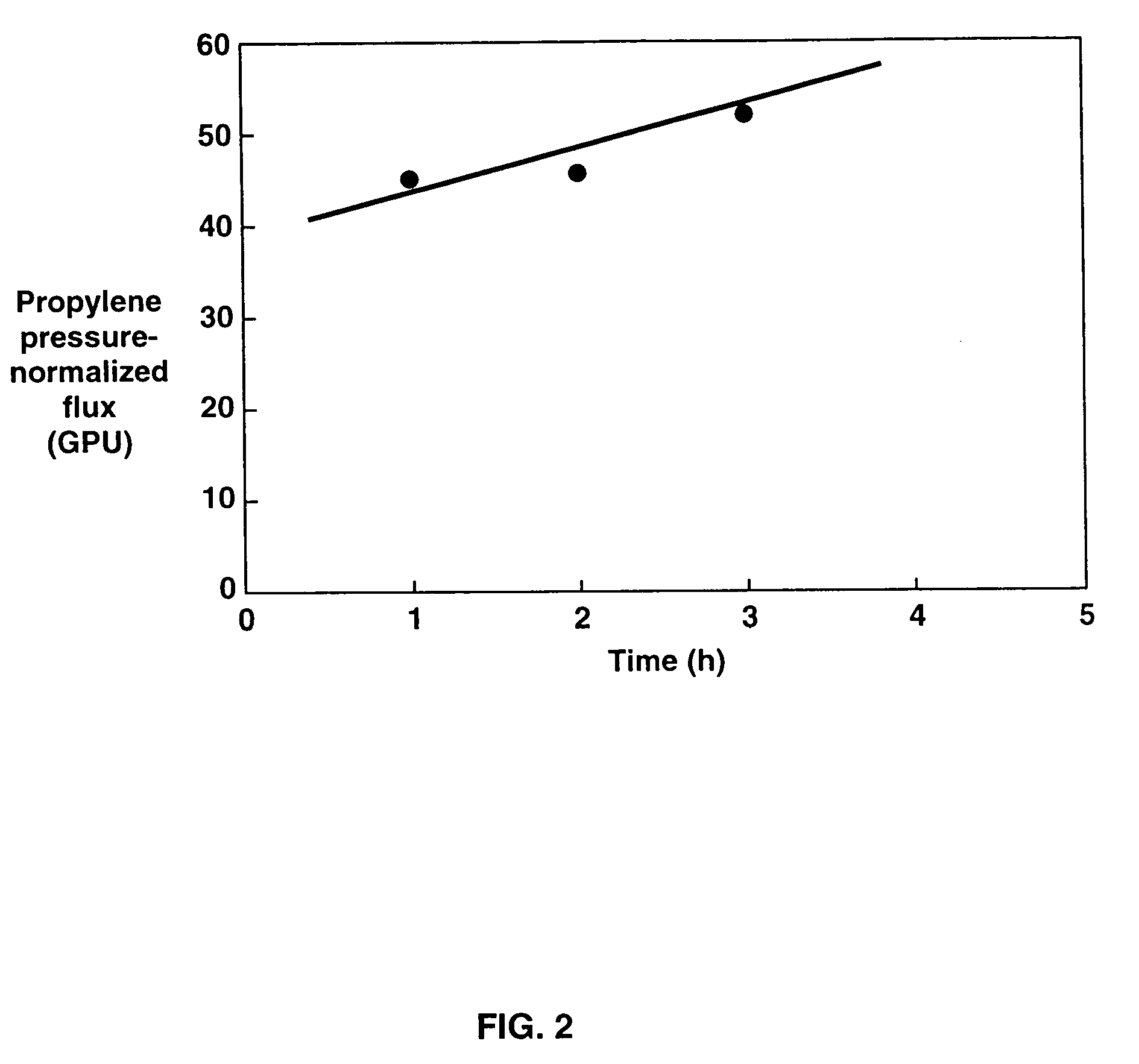Liquid-phase separation of low molecular weight organic compounds
a low molecular weight, organic compound technology, applied in the field of light components, can solve the problems of degrading performance, inconvenient recovery or further treatment of permeate, and difficult separation of polymer membranes, and achieve the effect of reducing the number of steps, facilitating recovery or further treatment of permeate, and high pervaporation pressur
- Summary
- Abstract
- Description
- Claims
- Application Information
AI Technical Summary
Benefits of technology
Problems solved by technology
Method used
Image
Examples
example 1
[0229]Asymmetric, microporous poly(etherimide) [PEI] support membranes were prepared, and a gutter layer was applied. The resulting membranes were dip-coated in a copolymer solution of 40% tetrafluoroethylene / 60% 2,2,4-trifluoro-5-trifluorometoxy-1,3-dioxole (Hyflon® AD60, Ausimont, Italy), in a perfluorinated solvent (Fluorinert FC-84, 3M, St. Paul, Minn.), then dried in an oven at 60° C. for 10 minutes. Samples of each finished composite membrane were cut into 12.6 cm2 stamps and tested in a permeation test-cell apparatus with nitrogen and oxygen to determine baseline permeation properties and to ensure that the Hyflon® layer was defect-free.
example 2
[0230]Composite membranes prepared as in Example 1 were cut into 12.6 cm2 stamps and tested in a permeation test-cell apparatus with a liquid feed mixture containing 60% propylene and 40% propane at 150 psig and 20° C. The pressure on the permeate side of the test cell was atmospheric. The propylene pressure-normalized flux was measured at 200×10−6 cm3(STP) / cm2·s·cmHg [GPU], the propylene / propane selectivity was calculated to be 1.4 and the propylene / propane separation factor was calculated to be 1.6.
example 3
[0231]The membranes used for the propylene / propane permeation tests in Example 2 were retested with nitrogen and oxygen at 50 psig and at various temperatures to determine their permeation properties after being subjected to the hydrocarbon liquids. The results of the tests are shown in Table 1. As can be seen, there was no significant change in the fluxes or selectivities before and after the propylene / propane tests, indicating that the membranes are stable in the presence of liquid hydrocarbons.
[0232]
TABLE 1GasPressure-NormalizedMixtureFlux (GPU)SelectivityStampTemp.Before TestAfter TestBefore TestAfter TestNo.(° C.)O2N2O2N2O2 / N2O2 / N212082.927.389.729.63.03.023080.625.291.829.33.23.134081.225.971.923.33.13.145074.624.593.230.93.03.0
PUM
| Property | Measurement | Unit |
|---|---|---|
| glass transition temperature | aaaaa | aaaaa |
| permeate pressure | aaaaa | aaaaa |
| permeate pressure | aaaaa | aaaaa |
Abstract
Description
Claims
Application Information
 Login to View More
Login to View More - R&D
- Intellectual Property
- Life Sciences
- Materials
- Tech Scout
- Unparalleled Data Quality
- Higher Quality Content
- 60% Fewer Hallucinations
Browse by: Latest US Patents, China's latest patents, Technical Efficacy Thesaurus, Application Domain, Technology Topic, Popular Technical Reports.
© 2025 PatSnap. All rights reserved.Legal|Privacy policy|Modern Slavery Act Transparency Statement|Sitemap|About US| Contact US: help@patsnap.com



